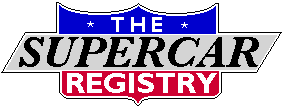

Dedicated to the Promotion and Preservation of American Muscle Cars, Dealer built Supercars and COPO cars. |
|
#1
|
||||
|
||||
|
Since I am home with a head cold this week I have plenty of time to think up stuff and post it on the forum.
Here's a question I came up with while shaving this morning: Since the Supercar Registry and this forum deal mainly with 1967-69 Camaros, 1966-70 Chevelles, and 1968-70 Novas that have been modified either by dealerships or through the COPO system into higher-performance "Supercars" with 427 engines*, is it fair to say that the whole "Supercar" category, as we know it, began in earnest with the 1967 Camaro SS? I realize that Joel Rosen was performing 427 swaps in new '66 Chevelle SS cars, as were some other dealers at the buyer's request, but it seems the term "Supercar" really began with the '67 Camaro. I have a 1967 Hi-Performance Cars magazine with a story on Motion's first "SS 427" Camaro conversion (from a 350 car) and in that same magazine is a Motion ad saying that SS 427 "Supercars" were available through Baldwin-Motion. Is that the first use of "Supercars" to describe the cars we consider as such today? Full disclosure: I have a '67 RS/SS 396 Camaro and it seems to me that since this is basically the "father" of the big-block "Supercar" craze, shouldn't it be considered a "Supercar" too? No, it's certainly not worth as much as a COPO or a dealer car, and as such, it isn't nearly as desirable. I suppose other fathers of the Supercar movement should be mentioned: the '65 Z16, the '66 SS 396 Chevelle. But I think things really took off with the '67 Camaro. *Apologies to Yenko Stinger and Deuce fans as well as '70 454 Chevelle fans--all three are super cars in their own right but I think they are in categories of their own, as is the 427 Corvette. I think the 427 engine swap into hardtops with back seats is what defines the "Supercar" category. Okay, let's hear it! |
|
|